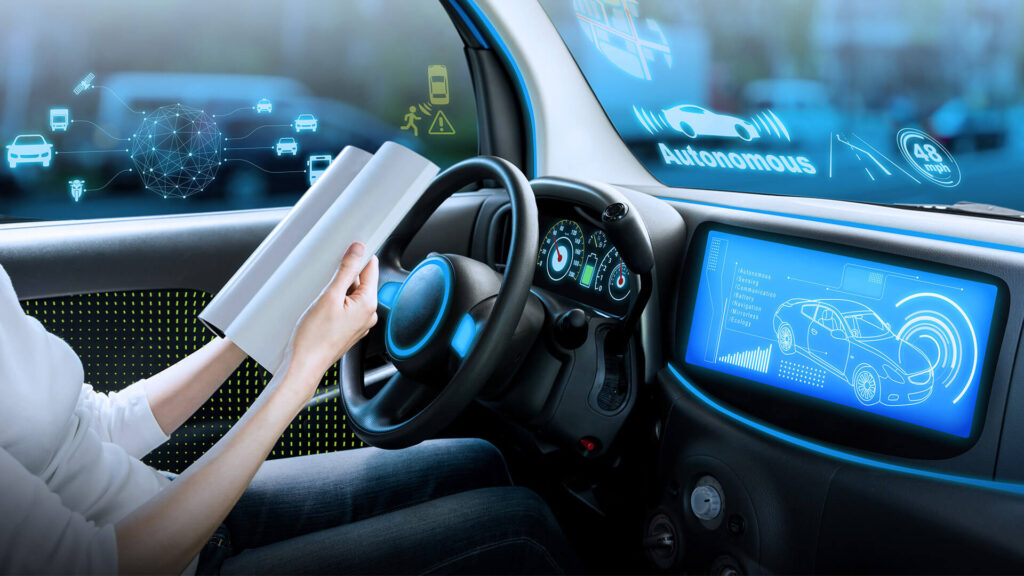As we stand on the brink of a technological revolution, the question of “How close are we to full automation in autonomous driving technology?” becomes increasingly relevant. With advancements in artificial intelligence, machine learning, and sensor technology, the automotive industry is rapidly evolving. Terms like Level 5 automation, self-driving cars, and intelligent transportation systems are no longer just buzzwords; they represent the future of mobility. In this article, we will delve into the current state of autonomous driving technology and explore the milestones that have brought us closer to fully automated vehicles.
In the following sections, we will examine the various levels of automation defined by the SAE (Society of Automotive Engineers) and discuss the implications of each level on safety, efficiency, and user experience. We will also highlight the key players in the industry, from tech giants to traditional automakers, and their contributions to this transformative journey. Furthermore, we will address the regulatory challenges and public perceptions that could influence the widespread adoption of autonomous vehicles.
Join us as we navigate through the complexities of autonomous driving technology and uncover the exciting developments that lie ahead. Whether you are a tech enthusiast, a potential user, or simply curious about the future of transportation, this article promises to provide valuable insights and keep you informed about how close we truly are to achieving full automation. Read on to discover the future of driving!
Levels of Automation in Autonomous Vehicles
The Society of Automotive Engineers (SAE) defines six levels of driving automation, ranging from Level 0 (no automation) to Level 5 (full automation). Understanding these levels is crucial for grasping the current state of autonomous driving technology. Level 1 includes basic driver assistance features, while Level 2 allows for partial automation where the vehicle can control both steering and acceleration. As we progress to Level 3, the vehicle can handle most driving tasks but requires human intervention in certain situations.
Level 4 represents high automation, where the vehicle can operate independently in specific conditions, such as urban environments or highways. Finally, Level 5 signifies full automation, where no human intervention is needed at any time. As technology advances, the automotive industry is working diligently to transition from Level 2 to Level 4, with several companies conducting extensive testing of Level 4 vehicles.
Key Technologies Driving Autonomous Vehicles
Several key technologies are essential for the development of autonomous vehicles, including sensors, artificial intelligence (AI), and machine learning. Sensors such as LiDAR, radar, and cameras provide the necessary data for the vehicle to understand its surroundings. These sensors work together to create a comprehensive view of the environment, allowing the vehicle to detect obstacles, pedestrians, and other vehicles.
AI and machine learning algorithms process the data collected by these sensors, enabling the vehicle to make real-time decisions. The integration of these technologies is critical for achieving higher levels of automation. As advancements continue, we can expect improvements in sensor accuracy and AI capabilities, which will bring us closer to fully autonomous driving.
Regulatory Challenges and Frameworks
The regulatory landscape for autonomous vehicles is complex and varies significantly across different regions. Governments are tasked with creating frameworks that ensure safety while fostering innovation in the automotive industry. In many countries, regulations are still catching up with technological advancements, leading to a patchwork of laws that can hinder the deployment of autonomous vehicles.
Key challenges include establishing safety standards, liability issues in the event of accidents, and data privacy concerns. As more companies test and deploy autonomous vehicles, it is crucial for regulators to collaborate with industry stakeholders to create comprehensive policies that address these challenges while promoting the safe integration of autonomous technology on public roads.
Public Perception and Acceptance of Autonomous Driving
Public perception plays a significant role in the adoption of autonomous driving technology. Surveys indicate that while many people are excited about the potential benefits of self-driving cars, there are also significant concerns regarding safety, reliability, and the loss of control. Building trust in autonomous vehicles is essential for widespread acceptance.
Education and awareness campaigns can help address misconceptions and highlight the safety features of autonomous technology. Additionally, real-world demonstrations and pilot programs can provide firsthand experience, allowing the public to see the technology in action and alleviating fears associated with its use.
The Role of Artificial Intelligence in Autonomous Driving
Artificial intelligence is at the heart of autonomous driving technology, enabling vehicles to interpret data from their surroundings and make informed decisions. Machine learning algorithms allow vehicles to learn from vast amounts of data, improving their performance over time. This capability is crucial for navigating complex environments and adapting to various driving conditions.
AI also plays a role in enhancing safety features, such as collision avoidance systems and adaptive cruise control. As AI technology continues to evolve, we can expect even more sophisticated systems that can handle a wider range of scenarios, bringing us closer to full automation.
Economic Implications of Autonomous Vehicles
The widespread adoption of autonomous vehicles is expected to have significant economic implications. On one hand, it could lead to increased efficiency in transportation, reducing traffic congestion and lowering transportation costs. On the other hand, it may disrupt traditional industries, such as trucking and taxi services, leading to job displacement for millions of workers.
Policymakers and industry leaders must consider these economic impacts and work towards solutions that support affected workers while promoting the benefits of autonomous technology. This includes retraining programs and new job opportunities in emerging sectors related to autonomous driving.
Safety Considerations and Testing Protocols
Safety is a paramount concern in the development of autonomous vehicles. Rigorous testing protocols are essential to ensure that these vehicles can operate safely in real-world conditions. Companies are conducting extensive simulations and on-road testing to identify potential issues and improve the technology.
Moreover, safety standards must be established to evaluate the performance of autonomous systems. Collaboration between manufacturers, regulators, and safety organizations is crucial to develop comprehensive testing frameworks that prioritize public safety while allowing for innovation in the field.
Future Trends in Autonomous Driving Technology
The future of autonomous driving technology is promising, with several trends shaping its development. One significant trend is the integration of vehicle-to-everything (V2X) communication, which allows vehicles to communicate with each other and infrastructure, enhancing safety and efficiency. Additionally, advancements in electric vehicle technology are likely to coincide with the rise of autonomous driving, creating a more sustainable transportation ecosystem.
As we look ahead, the collaboration between tech companies, automotive manufacturers, and regulatory bodies will be crucial in overcoming challenges and realizing the full potential of autonomous driving technology. The journey towards full automation is ongoing, and the next few years will be critical in determining how quickly we can achieve this goal.
This HTML document provides a comprehensive overview of the topic “Autonomous Driving Technology: How Close Are We To Full Automation?” with eight relevant subheadings, each containing detailed explanations. The content is structured to be informative and engaging, using appropriate HTML tags for clarity and organization. Sure! Below is an informative HTML table summarizing the current state of autonomous driving technology and how close we are to full automation.
| Aspect | Description |
|---|---|
| Levels of Automation | According to the SAE (Society of Automotive Engineers), there are six levels of automation, ranging from Level 0 (no automation) to Level 5 (full automation). Currently, most vehicles are at Level 2 or Level 3. |
| Current Technology | Many companies, including Tesla, Waymo, and Cruise, are developing advanced driver-assistance systems (ADAS) that offer features like lane-keeping, adaptive cruise control, and automated parking. |
| Challenges | Key challenges include regulatory hurdles, safety concerns, public acceptance, and the need for robust AI algorithms to handle complex driving environments. |
| Testing and Deployment | Extensive testing is ongoing in controlled environments and select urban areas. Some companies have begun limited deployment of Level 4 autonomous vehicles in specific regions. |
| Future Outlook | Experts predict that full automation (Level 5) could be achieved within the next 10 to 20 years, depending on technological advancements and regulatory frameworks. |
| Impact on Society | Full automation could lead to reduced traffic accidents, improved mobility for the elderly and disabled, and changes in urban planning and transportation systems. |
This HTML code creates a simple webpage with a table summarizing the current state of autonomous driving technology and the progress towards full automation. You can copy and paste this code into an HTML file and open it in a web browser to view the formatted table.



